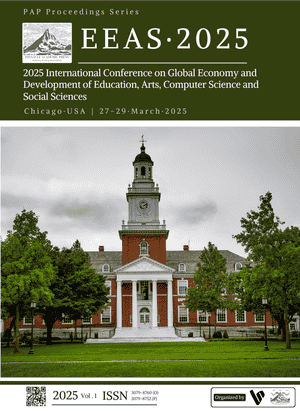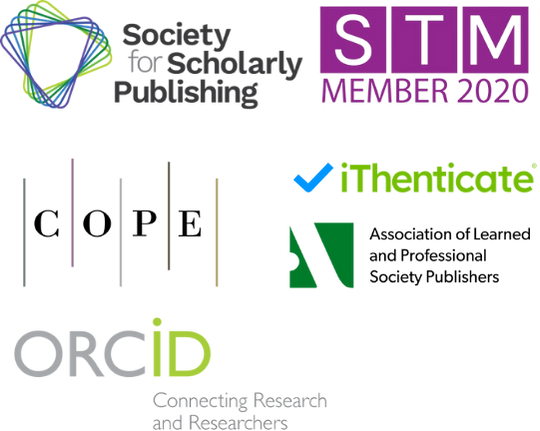Education and Economic Development in Nepal: A Comprehensive Analysis and Case Study of Religion-Backed Schooling
Keywords:
education inequality, religion-backed schooling, Dalit girls' education, caste-based discrimination, economic developmentAbstract
Nepal, a landlocked South Asian nation characterized by significant social and geographic inequalities, continues to face deep-rooted challenges in its education sector. Despite notable improvements in literacy and primary school enrollment, systemic barriers hinder equitable access to quality education, especially at higher levels. This study aims to examine the structural and economic dimensions of Nepal’s education crisis, assess the limitations of conventional funding models, and explore the potential of community-based educational initiatives with religious affiliation to address educational exclusion among marginalized populations. The paper adopts a qualitative case study approach, focusing on the Khawalung Girls' Education Program. It analyzes the program’s structure, community role, and outcomes to evaluate how faith-based models operate in areas underserved by the state. Findings indicate that while conventional mechanisms, such as state funding, private investment, and international aid, have often struggled to adequately reach disadvantaged groups, such initiatives show potential in providing access to education by leveraging local trust, community participation, and cultural legitimacy. However, these programs face critical constraints, including financial instability, teacher shortages, and curricular limitations imposed by national regulations. The study highlights the need for a multidimensional education reform strategy that incorporates collaboration among public institutions, private stakeholders, and religious or community-based organizations. Such integrative approaches are essential for creating a more inclusive, resilient, and equitable education system in Nepal, with broader implications for national development and poverty reduction.
References
1. R. Ram and S. Ural, "Comparison of GDP per capita data in Penn World Table and World Development Indicators," Soc. Indic. Res., vol. 116, pp. 639–646, 2014, doi: 10.1007/s11205-013-0284-0.
2. L. Chang et al., "6G-Enabled Edge AI for Metaverse: Challenges, Methods, and Future Research Directions," in Journal of Communications and Information Networks, vol. 7, no. 2, pp. 107-121, June 2022, doi: 10.23919/JCIN.2022.9815195.
3. B. N. Sapkota, "Development measurement in Nepal using population census 2021 data," Rural Dev. J., vol. 5, no. 1, pp. 11–24, 2025, doi: 10.3126/rdj.v5i1.75144.
4. I. P. Banjade and S. L. Shrestha, "Five-dimensional unequally weighted mapping methodology for measuring the level of hu-man development: An application in Bagmati Province, Nepal," Asia-Pac. J. Reg. Sci., vol. 8, pp. 1135–1161, 2024, doi: 10.1007/s41685-024-00359-1.
5. G. Pyatt, "Human capital: A theoretical and empirical analysis, with special reference to education — The residual factor and economic growth — Econometric models of education," Econ. J., vol. 76, no. 303, pp. 635–638, Sep. 1966, doi: 10.2307/2229541.
6. D. Acemoglu, F. A. Gallego, and J. A. Robinson, "Institutions, human capital, and development," Annu. Rev. Econ., vol. 6, no. 1, pp. 875–912, 2014, doi: 10.1146/annurev-economics-080213-041119.
7. T. Lemieux, "The 'Mincer Equation' Thirty Years After Schooling, Experience, and Earnings," in Jacob Mincer: A Pioneer of Mod-ern Labor Economics, S. Grossbard, Ed. Boston, MA: Springer, 2006, doi: 10.1007/0-387-29175-X_11.
8. R. M. Solow, "A contribution to the theory of economic growth," Q. J. Econ., vol. 70, no. 1, pp. 65–94, Feb. 1956, doi: 10.2307/1884513.
9. R. Peet, "The end of poverty: Economic possibilities for our time," Ann. Assoc. Am. Geogr., vol. 96, no. 2, pp. 450–453, 2006, doi: 10.1111/j.1467-8306.2006.00493.x.
10. J. A. Robinson and D. Acemoglu, Why nations fail: The origins of power, prosperity and poverty, pp. 45-47. London: Profile, 2012. ISBN: 2757-6809.
11. W. A. Lewis, Economic development with unlimited supplies of labour. 1954. ISBN: 0025-2034.
12. P. Aghion and S. Durlauf, "Preface to the handbook of economic growth," Handb. Econ. Growth, vol. 1, pp. xi–xv, 2005, doi: 10.1016/S1574-0684(05)01107-X.
13. R. E. Lucas Jr, "On the mechanics of economic development," J. Monet. Econ., vol. 22, no. 1, pp. 3–42, 1988, doi: 10.1016/0304-3932(88)90168-7.
14. J. Chen, X. Li, X. Zhou, and R. Ao, "Skill capabilities behind the scenes: the role of occupational portfolio in regional industrial evolution," Reg. Stud., vol. 59, no. 11, Nov. 2024, doi: 10.1080/00343404.2024.2416535.
15. C. Goldin, Understanding the gender gap: An economic history of American women, Cambridge, MA: Natl. Bur. Econ. Res., 1990. ISBN: 0-19-505077-0.
16. E. Duflo, "Women empowerment and economic development," J. Econ. Lit., vol. 50, no. 4, pp. 1051–1079, 2012, doi: 10.1257/jel.50.4.1051.
17. A. Chadha, Faith and Politics in South Asia: Exegesis in International Relations. Abingdon, UK: Taylor & Francis, 2024. ISBN: 9781003520924.
18. K. B. Thapa and B. B. Mukhia, "Religious education in Nepal," in The Routledge International Handbook of Religious Education, L. J. Francis, M. Robbins, and J. Astley, Eds. Abingdon, UK: Routledge, 2013, pp. 236–242. ISBN: 9780203106075.
19. K. Bhandari, "Demographic changes in Nepal," J. Popul. Dev., vol. 2, no. 1, pp. 77–91, 2021, doi: 10.3126/jpd.v2i1.43476.
20. N. P. Adhikari, "Teachers’ problems and concerns in teacher education," Interdiscip. Res. Educ., vol. 8, no. 1, pp. 125–135, 2023, doi: 10.3126/ire.v8i1.56732.
21. J. Gaytan, "Effective assessment practices in online education: A review of the literature," Career Tech. Educ. Res., vol. 33, no. 2, pp. 117–132, 2008, doi: 10.5328/CTER33.2.117.
22. N. P. Adhikari, "Teachers’ problems and concerns in teacher education," Interdiscip. Res. Educ., vol. 8, no. 1, pp. 125–135, 2023, doi: 10.3126/ire.v8i1.56732.
23. R. Ram, "PPP GDP per capita for countries of the world: A comparison of the new ICP results with World Bank data," Soc. Indic. Res., vol. 127, pp. 1057–1066, 2016, doi: 10.1007/s11205-015-1009-3.
24. U. Pyakurel, Reproduction of Inequality and Social Exclusion, Springer Singapore, 2021. ISBN: 978-981-15-8907-2.
25. S. Lal, "Nepal’s National Education Policy: Challenges, Progress and Future Directions," Political Science Journal, vol. 3, no. 1, pp. 95–107, 2025, doi: 10.3126/psj.v3i1.77458.
26. A. Shrestha, T. N. Bhattarai, G. Acharya, H. Timalsina, S. J. Marks, S. Uprety, and S. R. Paudel, "Water, sanitation, and hygiene of Nepal: Status, challenges, and opportunities," ACS ES&T Water, vol. 3, no. 6, pp. 1429-1453, 2023, doi: 10.1021/acsestwater.2c00303.
27. M. K. Sharma and R. Adhikari, "Effects of water, sanitation, and hygiene on the school absenteeism of basic level students in the government school of Nepal," Front. Educ., vol. 7, p. 869933, 2022, doi: 10.3389/feduc.2022.869933.
28. S. Ghislandi, W. C. Sanderson, and S. Scherbov, "A simple measure of human development: The human life indicator," Popul. Dev. Rev., vol. 45, no. 1, pp. 219-233, Mar. 2019, doi: 10.1111/padr.12205.
Downloads
Published
Issue
Section
License
Copyright (c) 2025 Runyu Zhao (Author)

This work is licensed under a Creative Commons Attribution 4.0 International License.



